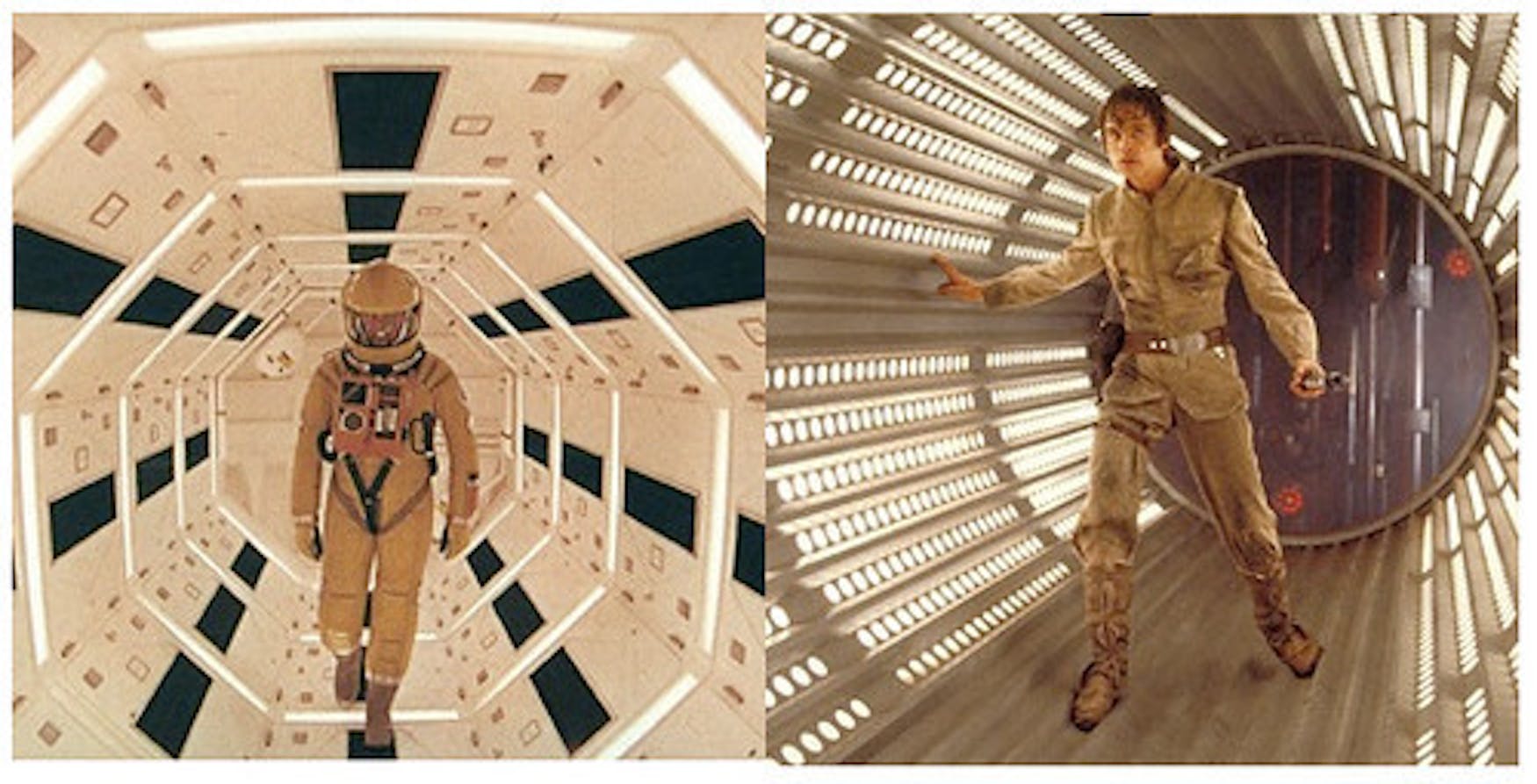Kubrick’s ‘2001: A Space Odyssey’ is a work of genius
One of the most celebrated pieces in film history, Stanley Kubrick’s “2001: A Space Odyssey” — based on Arthur C. Clarke’s book of the same name — is revered as a technical wonder and exists in an interesting contrast to his other, often grotesque or disturbing films. The science fiction movie is essentially a story of progress and evolution, beginning with our ape ancestors and taking us well into the future of humanity. Here is a spoiler-free review of my favorite movie of all time!
One cannot discuss “2001” without mentioning the absolute artistry of it, not just as a meaningful story but as a visual masterpiece. Possibly the most famous shot from the film is of astronaut protagonist, David Bowman, space-suited up and walking down the white corridor of his ship. It is a beautiful shot, and the film is filled with other cinematic feats such as this: wide shots of massive spaceships, which in reality are incredibly detailed and impressive models; gorgeous desert landscapes and skillfully set up symmetrical shots that are incredibly pleasing on the eye. I’d highly recommend watching this movie on as large of a screen as possible — with good speakers too, as you want to fully enjoy the presence of “2001’s” famous theme: “Also sprach Zarathustra” (if you think you haven’t heard it, you definitely have!). Classical orchestral music permeates the film, creating an iconic fusion of the past and the future. In short, the visuals and music work together to create a truly majestic film.
“2001” isn’t just a vision of the future, though; while the film is about the evolution of humankind, in hindsight it also serves as a sort of artifact, capturing a unique time in American culture and history. For instance, the space shuttles seen at the beginning of the movie are notably branded with the Pan American Airways logo. This small detail is significant when you note that while Pan American was the most successful airline of the 1900s and a pioneer of the industry, it is no longer around. From the perspective of the 1960s filmmakers, what other brand could possibly make the leap into space travel than the luxurious Pan American? Of course now, this is just a relic of the past, but immortalized in the film.
Speaking of the 1960s, the making and release of this film fell during an especially significant time in U.S history: “2001” was released in 1968, one year before the moon landing and right in the middle of the Cold War. The film captures the essence of this time; a profound excitement for the future of space travel and technology, but also a desire for world powers to collaborate on these endeavors. At the start of the film, Russian and American scientists are shown to not just be colleagues, but also great friends. At the time of this film’s release, the Soviet Union and the United States were in the midst of a heated competition deciding which power would be at the forefront of space exploration. “2001” paints an alternative picture of scientific partnership which sends a strong political signal even today.
The message of “2001: A Space Odyssey” is deeply meaningful. It is an appreciation for the skills and spirit of humanity, a caution against ourselves and what our own creations can do to us and a hopeful reminder that as a species we will continue to grow and change for the better! To me, the film also gives a greater meaning to the universe, creating a world that is held together by something not necessarily comprehensible but there nonetheless.



Please note All comments are eligible for publication in The Justice.